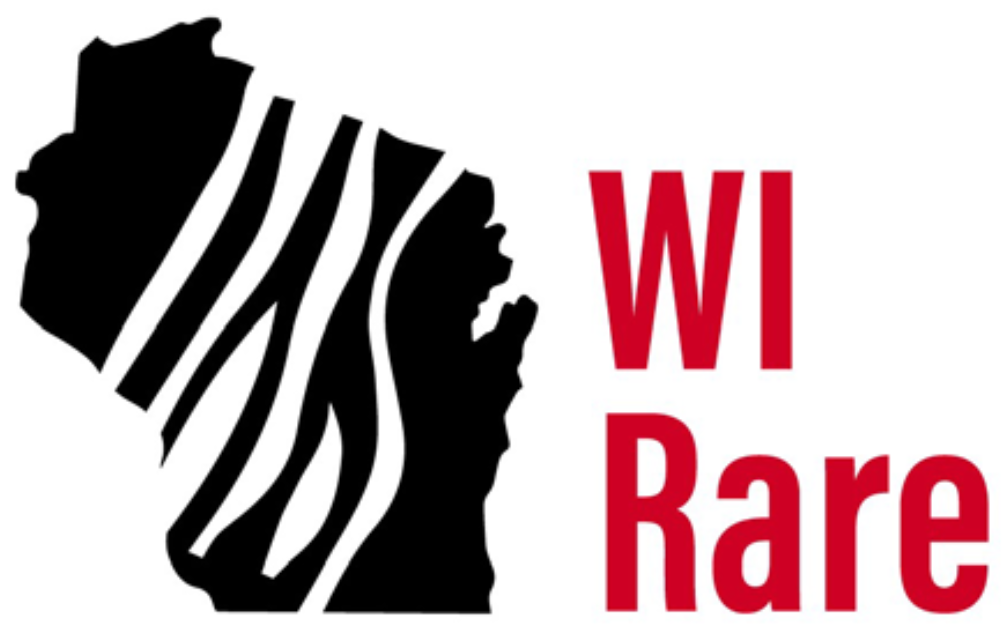About Rare Diseases
Based on our population, Wisconsin has an estimated 600,000 individuals living with rare diseases and more than 6,400 new babies are born yearly with rare diseases.
There are more than 10,000 known rare diseases that affect about 30 million people (or 1 in 10 people) in the U.S. Over 200 new rare diseases continue to be identified each year. Only about 10% have approved treatments. Yes, that means 90% of rare diseases do not have treatments! This is a public health problem.
Most but not all rare diseases are genetic diseases. Often serious, chronic and progressive, many rare diseases are identified at birth or in childhood. Two of every three rare disease patients are children. Very few rare diseases have a cure and roughly 30% of children with rare diseases die before age five.
In addition to the disease itself, those impacted by rare diseases are also more psychologically, socially, economically and culturally vulnerable. Health care costs are estimated to be similar to that of cancer for a person with a rare disease.

Appropriate medical care and treatment can improve the quality of life for those with rare diseases. Science and technology continue to evolve to improve the diagnosis, care and treatment of rare diseases. The knowledge of the natural history of diseases is being improved by the creation of rare disease registries. Early testing for childhood diseases have each shown to save and improve lives.
Three common methods of diagnoses for rare disease include:
- Newborn screening
- Genetic testing
- Biomarker testing

Newborn Screening
Every baby born in a hospital will have this test done, unless the family chooses to opt out for religious or other reasons. The screening is done within the first 24-48 hours after birth. It consists of three tests; a blood heel stick screening, a hearing screening and a heart screening. The heel stick blood screening involves a prick of the baby’s heel to obtain a small amount of blood which is collected on a card and then sent to the lab. The lab tests for genetic, metabolic, and enzymatic conditions that can be treated when found early. The number of tests completed varies by state.
Wisconsin Policy
Here in Wisconsin, the blood screening tests for many conditions in addition to the hearing loss and critical congenital heart screenings. You can view the complete list of conditions here.
There are additional tests available and being developed that could be included on the NBS panel in Wisconsin. Stay up to date on policy change initiatives and support rare disease advocacy actions! See our Advocacy Page for active legislation

Additional Newborn Screening Resources
- WI Newborn Screening: Blood Screening 1-pager (English)
- WI Newborn Screening: Blood Screening 1-pager (Hmong)
- WI Newborn Screening: Blood Screening 1-pager (Spanish)
- WI DHS Newborn Screening Program
- American Academy of Pediatrics Newborn Screening Tests
- Baby’s First Test
- National Academies Consensus Newborn Screening Study Report

Genetic Testing

Genes determine nearly everything about us, from the color of our hair to the height that we grow. Many rare diseases are caused by a dysfunction of our genes, which is why genetic testing is a helpful tool for diagnosing rare diseases. Genetic testing looks at genes, and sometimes chromosomes, to identify the root problem of an illness. It is performed using a sample of blood, urine, saliva, buccal (cheek) swab, or a skin biopsy. The testing lab analyzes DNA from this sample and compares it to a database of genetic information. They look for changes in your genes (called “variants”) that can explain the symptoms you are having.
If you want to pursue genetic testing, you will likely need a medical geneticist. Your primary doctor should be able to help direct you.
Common Types of Genetic Testing
- Single gene testing: If a doctor suspects the symptoms you are experiencing derive from a change in one specific gene, then they will consider single gene testing. This involves reading each letter of the gene to search for misspellings, missing letters, or extra letters in the DNA code. If a change is identified, this test can be used for relatives as well to look for the known genetic change.
- Targeted gene panel testing: This test looks for changes in many different genes that are known to cause a specific disease.
- Exome sequence: Exomes are the part of genes that code for proteins. They make up 1-2% of our DNA, but are associated with 85% the changes that lead to genetic conditions. For this test, the affected individual and both of their parents provide a DNA sample so the lab can compare the parent’s DNA to the individual. The lab only looks at genes that may be responsible for causing specific symptoms. You may choose to receive information about genetic changes that cause other conditions unrelated to you or your child’s symptoms as well.
- Genome sequencing: This testing is the most comprehensive for identifying rare diseases. It involves a complete analysis of the genome. The results from this test may be reanalyzed as more information about genetics is discovered.
Additional Resources and Organization for Genetic Testing in Wisconsin
Navigating the Genetic Maze Video Series
Genetic Testing & Counseling 101
Inheritance
Test Interpretation
Mutations
Genetic Testing
Meet the Team
Ethics of Genetic Testing
Genetic testing raises ethical concerns for multiple reasons. One example is that it reveals information about other family members aside from the person being tested. This can cause stress and emotional dilemmas to family members because they could potentially have the condition as well. Emotional distress can also stem from uncertainty of results, and this is especially true for certain rare diseases. Interpretation of genetic variants can be ambiguous, complicating medical decision-making. It is important to provide complete consent before receiving testing and understand what your results could mean for you. Nevertheless, genetic testing has allowed us to make great strides in diagnosing and understanding rare disease. Decisions surrounding genetic testing are difficult and complicated, but we are here to help and support you on your journey here at the Wisconsin Rare Disease Alliance.

Biomarker Testing
These substances can provide information about a condition or disease, or indicate whether a process is normal or abnormal. It can help improve diagnosis, predict when a disease will appear, and monitor how a patient responds to treatment.
Why do we look at these for diagnosis?
Biomarker testing is beneficial for many reasons:
- It provides precise information about the disease at a cellular or molecular level that symptoms alone do not reveal
- It helps differentiate between diseases that have overlapping symptoms to ensure the patient receives proper diagnosis and treatment
- It is time effective and helps avoid cycles of misdiagnosis
- This method is non-invasive or minimally invasive which is important for individuals who may undergo many series of invasive tests
Where can I get biomarker testing in Wisconsin?
- Most primary physicians can complete some type of biomarker testing
- All labs do biomarker testing – any doctor can request it
- Types of biomarker testing

Examples of rare diseases that use biomarker diagnosis
- Hemophilia – a blood test determines if clotting factors are missing or at low levels and which ones are causing the problem
- IgA nephropathy (Berger disease) – urine sample at pediatric level could help diagnose this disease because it is characterized by a buildup of antibodies in the kidney

You Are Not Alone

If someone in your family has been diagnosed with a rare disease, please know that you are not alone. There is a whole rare disease network of families, healthcare providers, nonprofit organizations and others diligently working to support, educate, research treatment for those impacted by rare disease. We are here to connect those impacted by rare disease with a support system to help navigate this difficult journey. We encourage you to reach out and be a part of our community.


